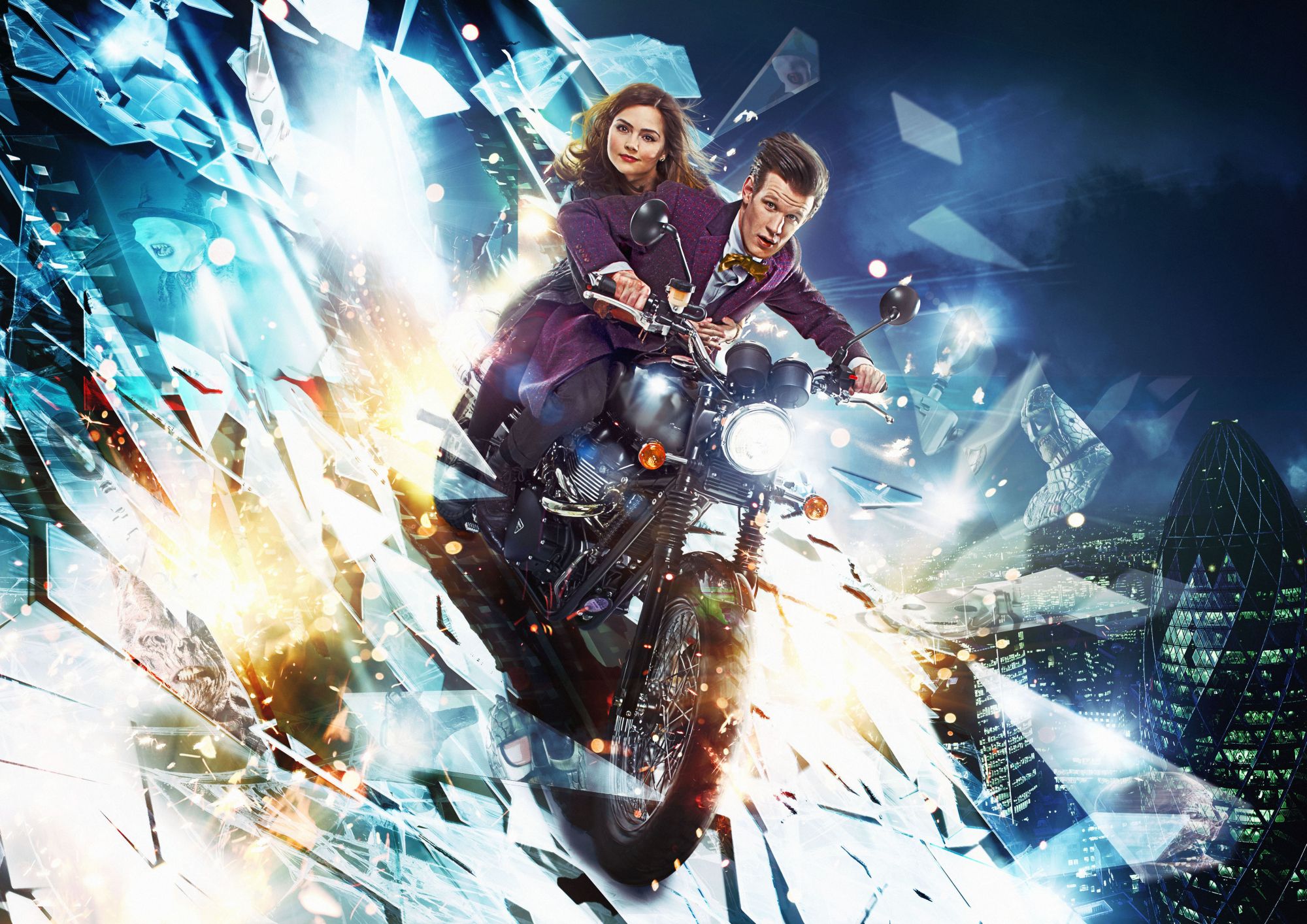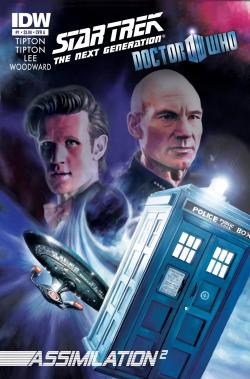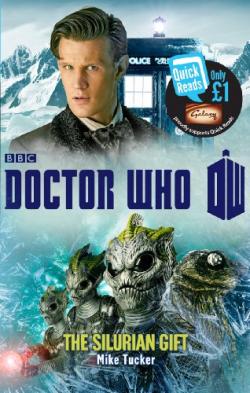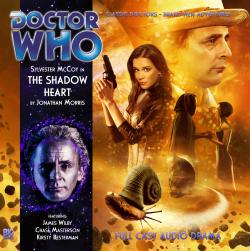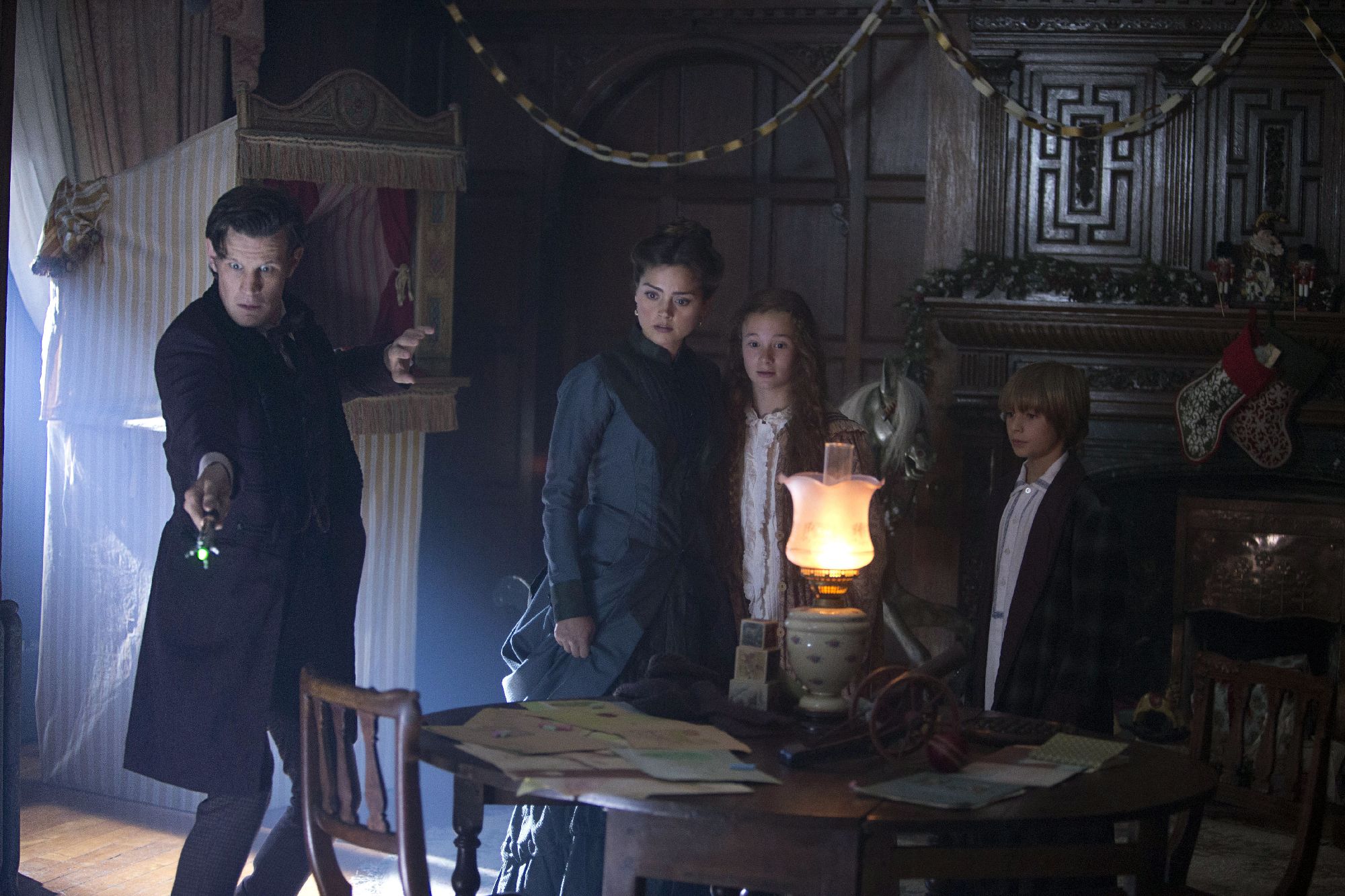The Rings of Akhaten
Sunday, 7 April 2013 - Reviewed by
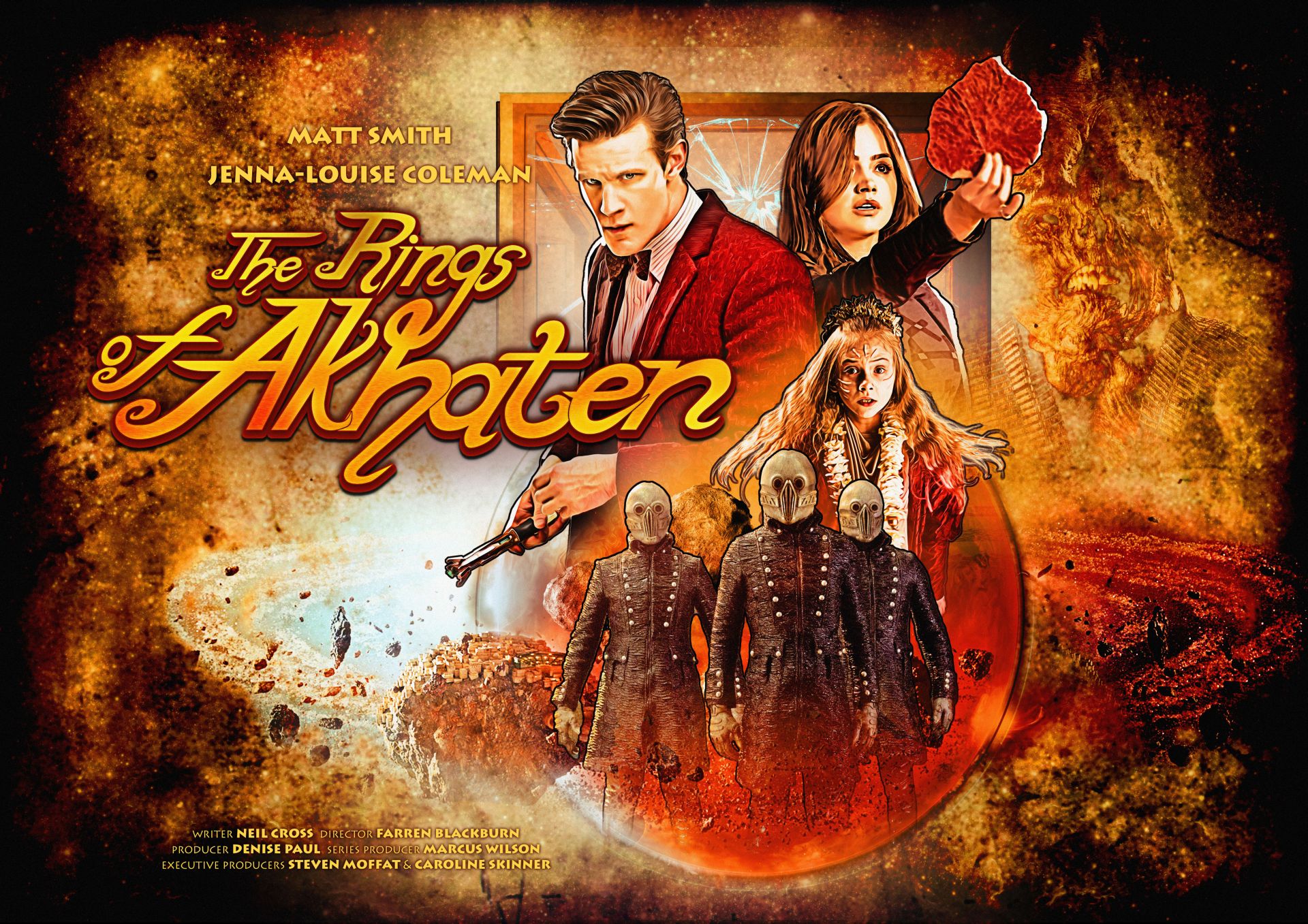
Doctor Who - The Rings of Akhaten
Written by Neil Cross
Directed by Farren Blackburn
Broadcast on BBC One - 6 April 2013
Doctor Who isn’t specially made for those of us who go online and watch multiple trailers multiple times or devour previews, but it is concerned with those who catch trailers between other programmes or might occasionally view online previews. The audience for The Rings of Akhaten was carefully primed to expect a story set in space with multiple alien species and a child-threatening monster. This is of course what they received, but to get there they took the public footpath rather than the motorway. There the themes of the season were restated and the moral of the episode prepared for, and the background of our new heroine explored further.
The Rings of Akhaten unexpectedly proved to be the first of this series’ visits to the recent past, with the central narrative being framed by the Doctor’s research expedition to establish Clara’s personal history. That history so far appears unencumbered by otherworldly or extradimensional intervention beyond the Doctor’s periodic sampling of her life, but the episode does raise the puzzle of the TARDIS’s unwillingness to open its doors to her, and provoke expectations surrounding the early death of Clara’s mother. On the one hand the loss of Ellie and the refusal of the TARDIS doors to open are both perfectly regular occurrences. People die, sometimes early; and Clara does not have the TARDIS key. Still, the idea that the TARDIS doesn’t like Clara is expressed in the shadow of the personalisation of the ship in The Doctor’s Wife and the affinity it displays with Melody/River in Let’s Kill Hitler. We are given many reasons to admire Clara in this episode, but there are unsettling notes in the background.
Those unsettling notes are not provided by Murray Gold, whose music moves back into being part of the narrative rather than a commentary upon it. His soundtrack to this story recalls his earlier choral works, especially those in Journey’s End and The End of Time, both in implying doomsday and in offering salvation from it. There were moments where one felt one was listening to a bland contribution to a fashionable modern hymnal, but there had to be contrast with the ritual hymn and subtlety of mood is difficult when a composer has so few minutes to work within, and so many other elements within the episode to underwrite. Overall, Gold continues to recognise and project the tone of the series: peril is interpreted in a less self-indulgently sinister manner than Dudley Simpson might have managed in the mid-1970s, but Gold’s scoring is intelligent and poignant, working with the emotions of the characters rather than trying to impose a mood on the viewer.
Doctor Who makes selective use of popular music, but a willingness to use it at all was one of the refreshing points of the revived series in 2005. ‘Ghost Town’ by the Specials is used to signify 1981, juxtaposed with the Doctor reading The Beano Summer Special of that year, but the use of the song has further implications. It plays over the first meeting of Ellie and Dave, Clara’s parents; does this somehow prefigure apocalypse? More specifically for the episode’s plot, ‘Ghost Town’ concerns collective memory and experience. In terms of The Rings of Akhaten this is the history taught in song to Merry so she can feed her people’s god, and also Clara’s remembrance of her dead mother and the stories she passed on to her. ‘Ghost Town’ also echoes the Doctor’s long life and the memories which he rarely discusses but which he is willing to offer to the god to be devoured. If these ghosts are reflections of the past they can be confronted and digested. It’s the reflections on what might have been which can’t be faced, because they were never realised in the first place. As such, their form is unfixed and insubstantial and it’s appropriate that they give the Old God of Akhaten indigestion.
The Rings of Akhaten has been promoted as another instalment of cinematic Doctor Who, but it seems more at home within the confines of the small screen than many of its predecessors. The bazaar set is crowded and claustrophobic, and while this was set up in Roath Lock, one can imagine something similar being realised in Television Centre or with ingenuity and still narrower camera angles in Lime Grove or Riverside. The CGI is limited and relatively static compared with recent episodes and there is one space exterior very visibly realised using that age-old standby, the black cloth with lights shining through it. The great exception is the sense of distance suggested by the cuts between the Mummy’s temple and the open theatre where Merry sings her lullaby before her audience. Nevertheless, the concentration on a series of undynamic images mostly works to the episode’s advantage. The episode is substantially the story of Clara and Merry and the sets and effects function largely as background to a series of portrait shots rather than as features in their own right. They do register as a series of references to a cinematic heritage. The Rings of Akhaten suggests Ancient Egypt in its title (though misleading some fans, and journalists, to expect a connection to the natives of Phaester Osiris and Pyramids of Mars). The design of the sets is placed in the broad western tradition of Orientalism (and ‘Ghost Town’ too contains musical references to middle-eastern music or at least a twentieth-century Euramerican theatrical idea of what middle-eastern music was). Set designs which recall depictions of Egypt, Arabia or India in film are joined with a script inspired by Chinese or Japanese orthography. The plot, too, has echoes of various generations of The Mummy, and the Indiana Jones series. The episode could be construed as cinematic in its referencing rather than in its execution; though it’s also been seen as a literary episode, one more familiar with literary SF than me having noted links with Ursula K. Le Guin’s Earthsea books. It’s the influence of cinema, and the depiction of Islamic, south and east Asian societies in adventure films, which lingers the most; perhaps it is appropriate then that the Old God is depicted both as Ancient Egyptian sun god and American Halloween pumpkin.
In performance, the episode demands most of Matt Smith and Jenna-Louise Coleman, with special mentions for Michael Dixon and Nicola Sian as Clara’s parents, who had to carry much of the pre-credits sequence, and for Emilia Jones as Merry. The latter’s role at first seems to have clear analogies with a schoolchild wanting to avoid embarrassment before peers and parents when faced with a solo song or reading. Emilia Jones conveys Merry’s predicament as the Queen of Years as if it is nothing extraordinary, the better for Jenna-Louise Coleman to reinforce Clara’s affinity with children, and later displays a fierce determination to fulfil her destiny. In contrast to the Clara of The Snowmen, this Clara seems more like the folk image of a Blue Peter presenter than Mary Poppins; she is compassionate, brave, willing to take risks as extreme as driving a space vehicle she’s only known briefly as a passenger, and able to think laterally at times of crisis. Matt Smith’s Doctor continues to evolve, becoming yet more attached to Amy’s glasses (does looking through them, perhaps, remind him of the human perspective?) and in doing so coming more to resemble Harold Lloyd than Norman Wisdom or Michael Crawford-as-Frank Spencer; this comparison seems also fitting for his Doctor’s greater physical self-control and proactivity.
The Rings of Akhaten furthers Doctor Who’s attitude to religion. The Doctor won’t disassociate himself from the beliefs of the inhabitants of the Akhaten system completely. His description of their faith as a ‘story’ is not a dismissal in a series so self-aware of its own storytelling. He gives a rationalist, empirical, cosmologist’s account of the making of the universe and what individuals are made of in order to convince Merry of her worth in her own right, not as the Queen of Years. Souls, the Doctor says, are stories; the roots and merits of this idea in the context of various religions should be left to those with more skill in comparative theology, but it’s an appropriate foundation for a belief system in Doctor Who. More frivolously, red is still the colour for religious orders in Doctor Who, five years from The Fires of Pompeii, but just over three from The End of Time.
Though the Old God is defeated and extinguished at the end of the episode, the return of the ring which Clara gave to Dor’een indicates that the best of the faith, a respect for lived experience and giving of oneself, survives. The Doctor gives that ring to Clara in a gesture which recalls the way in which he gave her Victorian counterpart the TARDIS key. For Clara this restores what she surrendered to the Old God with the leaf from 101 Places to See and confirms her integrity, which the Doctor’s mention of “someone who died” then seems to undermine. A viewer remembering The Snowmen might see the ring as a provisional commitment, short of the TARDIS key which marks the Doctor’s whole trust and performs a quasi-sacramental role within what The Myth Makers would remind us is the Doctor’s own ‘temple’. The Doctor is still no closer to finding out who or what Clara is at the end of the story; together with his mistaken identification of the Mummy as the Old God, this episode places unusual emphasis on his fallibility.
The Rings of Akhaten is a change in setting and tone from the expansive ebullience of The Bells of Saint John. The jumps in character progression which enable the telling of this story in forty-four minutes place a little strain on credibility but they are sustained by convincing performance and assertive editing. It’s an intimate story which could do with a little more breathing space in order to develop its themes of learning to explore and appreciate lives lived as a basis for future actions and discoveries. The fact that Clara has lived the life which enables her to understand and deploy her own story and the stories of others which influenced her against the Old God becomes not just a character strength and crisis resolution, but for Doctor and viewer, a frustrating and engaging narrative problem.
